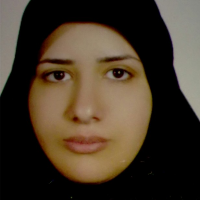Palynology of the Dalichai Formation in the Guydagh section, southeastern Maragheh, according to dinoflagellate
Author(s):
Article Type:
Research/Original Article (دارای رتبه معتبر)
Abstract:
Introduction
The Dalichai Formation is represented by greenish-grey color shales, calcareous shales, marls, and richly ammonitiferous limestones (Steiger, 1966), being widely distributed in the Alborz Mountain, northern Iran. It disconformably overlies the dark, siliciclastic coal bearing Shemshak Formation and underlies gradually by the light colored, more uniform Lar Limestone containing chert concretions. The Dalichai Formation is represented the first rock unit of the Jurassic marine sediments of the Alborz Mountain. This Formation includes a diverse fauna as ammonites, belemnites, bivalves, brachiopods, echinoderms, sponges, bryozoans and foraminifera (Stöcklin 1972; Sussli 1976; Nabavi & Seyed-Emami 1977; Alavi-Naini et al. 1982; Schairer et al. 1991; Seyed-Emami et al. 1985, 1989, 1995, 1996; Shafeizad et al. 2002; Shafeizad and Seyed- Emami 2005; Alvani 2006; , Niknahad 2007; Shahrabi 1994; Vaziri et al. 2008, 2011; Shams 2007; Makvandi 2000; Tutunchi 2001). Due to presence of shale and marl layers, this formation has been the subject of many palynological studies. (such as Wheeler & Sarjeant 1990; Ghasemi-Nejad et al. 2012; Mafi et al. 2013; Dehbozorgi et al. 2013; Hashemi-Yazdi et al. 2015; Skupien et al. 2015; Dehbozorgi 2013; Saadati Jafarabadi et al. 2013; Hashemi Yazdi 2008, 2015; Orak 2010; Sajjadi et al. 2009; Sabbaghiyan 2009; Ghasemi-Nejad et al. 2008; Boroumand et al. 2011, 2013; Farisi Kermani 2003; Ghasemi- Nejad & Khaki 2002; Navidi 2013).The purpose of this study was to determine the palaeoenvironmental interpretation of the Dalichai Formation based on inferred palaeoecological preferences of dinocyst types, and quantitative analysis of the palynofacies in the Dalichai Formation at the Guydagh section, southeastern Maragheh.
Material and
Methods
Totally 23 palynologically possible samples collected from the Dalichai Formation at Guydagh section, southeastern Maragheh. All samples were prepared following standard palynological processing procedures (Phipps & Playford, 1984), including HCl (10-50%) and HF (40%) utilized for dissolution of carbonates and silicates, respectively. Then the residues were saturated with ZnCl2 solution (specific gravity 1.9 g/ml) for density separation. All the residues were sieved with a 20 μm mesh sieve previous to making strew slides. Three slides for each preparation were examined by transmitted light microscope.For quantitative study of the prepared slides, 15 field views were randomly selected from each slide and studied with a 16 - microscope magnification lens. The particles were counted for each sample to determine palynodebries and palynofacies. An analysis of facies including identification of palynomorphs, plant remains and amorphous particles, ratios of different particles, their size range in determination the paleoenvironment is highly important. Three main parameters including percentage of palynomorphs, phytoclasts, and organic matter (AOM) were transferred to Tyson triple diagram (Tyson 1993) for plotting and interpretations.
Discussion of Results and
Conclusions
Diverse and moderately preserved palynofloras of marine and terrestrial derivation occur in surface samples of the Dalichai Formation Guydagh stratigraphic section in the southeast of Maragheh, western Alborz, northwestern Iran. In order to determine the age and reconstruct the paleoenvironment of the study section (including 198 meter of limestone, calcareous shale, marl and shale) was selected and examined palynologically.The palynofloras comprise dinoflagellate cysts, miospores (spores and pollen grain), acritarchs, scolecodonts, fungal and algal spores. The palynological investigations led to recognition of 85 species of dinocysts belong to 43 genera. Based on recorded dinocyst assemblages, especially marker species, three palynozone including Cribroperidinium crispum Total Range Zone (late Bajocian), Dichadogonyaulax sellwoodii Interval Zone (Bathonian – early Callovian) and Ctenidodinium continuum Interval Zone? (late Callovian) and one subzone (subzone "a" from early to middle Bathonian) were identified.
The high similarity of western Alborz dinoflagellate assemblages with assemblages recorded from different parts of Iran (such as central and eastern part of Alborz and Binalud) and other parts of world (northwest of Europe, China, Qatar, Canada, Denmark, Egypt and etc.) proved presence of seaway connections between the mentioned basins through the late Bajocian - late Callovian.
Also based on the palynofacies studies, four palynofacies of Tyson (1993) (II, IVa, VI, IX) were determined that proposed domination of a dysoxic shallow marine environment throughout the sedimentation of Dalichai Formation. Palynological evidence such as high frequency of proximate dinocysts to chorate forms; the high proportion of the equidimensional opaque palynomaceral to the blade-shape opaque palynomaceral; the high ratio of phytoclasts to marine palynomorphs, and the abundance of transparent amorphous organic matter in comparison to the opaque amorphous organic matter, all indicates that the Dalichai sediments, accumulated in a dysoxic shallow marine environment at the Guydagh section, southeastern Maragheh.
Keywords:
Language:
Persian
Published:
Stratigraphy and Sedimentology Researches, Volume:34 Issue: 1, 2018
Pages:
91 to 108
magiran.com/p1934558
دانلود و مطالعه متن این مقاله با یکی از روشهای زیر امکان پذیر است:
اشتراک شخصی
با عضویت و پرداخت آنلاین حق اشتراک یکساله به مبلغ 1,390,000ريال میتوانید 70 عنوان مطلب دانلود کنید!
اشتراک سازمانی
به کتابخانه دانشگاه یا محل کار خود پیشنهاد کنید تا اشتراک سازمانی این پایگاه را برای دسترسی نامحدود همه کاربران به متن مطالب تهیه نمایند!
توجه!
- حق عضویت دریافتی صرف حمایت از نشریات عضو و نگهداری، تکمیل و توسعه مگیران میشود.
- پرداخت حق اشتراک و دانلود مقالات اجازه بازنشر آن در سایر رسانههای چاپی و دیجیتال را به کاربر نمیدهد.
In order to view content subscription is required
Personal subscription
Subscribe magiran.com for 70 € euros via PayPal and download 70 articles during a year.
Organization subscription
Please contact us to subscribe your university or library for unlimited access!


